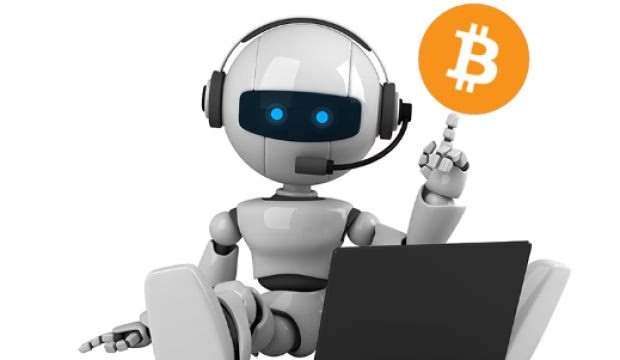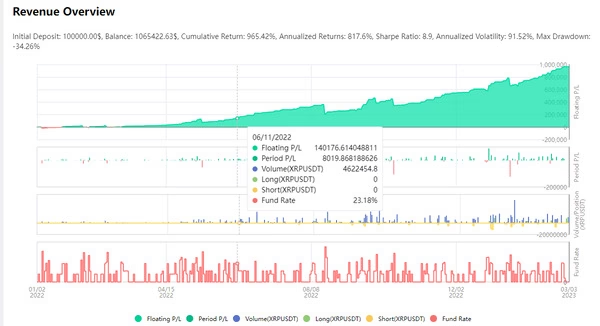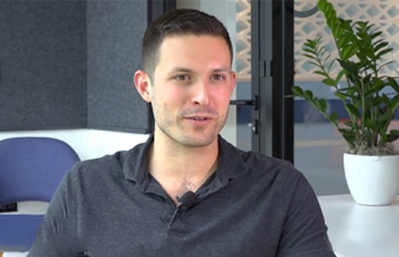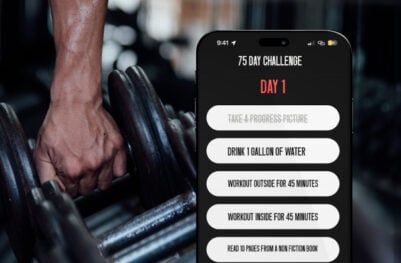- Developers
- Developer Blog
- FinTech Software Development
- How to Create an AI Crypto Trading Bot?

profile

By Aran Davies
Verified Expert
8 years of experience
Aran Davies is a full-stack software development engineer and tech writer with experience in Web and Mobile technologies. He is a tech nomad and has seen it all.
Are you thinking of creating an AI crypto trading bot? In this article, we will show you how to build cryptocurrency trading bots using ChatGPT and develop custom crypto bot solutions as well as provide a list of the top five AI crypto trading bots in 2024.
In this article
- Using ChatGPT to Create an AI Crypto Trading Bot
- Custom AI Crypto Bot Development
- Best AI Trading Bots 2024
- Planning to Integrate AI and ML Into Your Crypto Trading Bot?
Let’s start with some statistics and latest trends. The global cryptocurrency market is expected to reach $4.94 billion by 2030. The number of crypto market users is forecast to total 992.50 million by 2028.
Cryptocurrency trading volumes in March 2024 nearly doubled month-on-month, pushing the crypto market capitalization 19% up to reach about $2 trillion, Investing.com reports in April 2024.
The crypto market can be quite challenging with volatile market conditions, and advanced artificial intelligence-based tools like ChatGPT make it easier to quickly develop crypto trading bots for automated market analysis and decision-making support.
If you need assistance with building an AI cryptocurrency trading bot from the ground up or customizing a readily available crypto bot, look no further. Having deep expertise in developing cryptocurrency market-related solutions, DevTeam.Space’s software engineers can help you bring your trading bot idea to life.
You can tell us briefly about your project, and one of our tech account managers with relevant experience will contact you shortly to discuss the details.
Using ChatGPT to Create an AI Crypto Trading Bot
ChatGPT or Chat Generative Pre-Trained Transformer language model is capable of generating human-like text and engaging in conversational communication. You could feed prompts to ChatGPT and get responses for crypto trading.
For example, you can ask ChatGPT to go through the vast amount of textual data related to cryptocurrency, such as news articles, social media posts, etc., and help you with market analysis.
To use ChatGPT to develop an AI crypto bot, take the following steps:
1. Define Trading Strategy
You need to decide on the type of trades you want your bot to execute, for example, day trading, long-term investments, etc. Clearly define your trade objectives, risk tolerance, market focus, etc.
2. Define the Project Scope and Requirements
Analyze your project specifications. Do you already have a bot and want to enhance it with ChatGPT integration? Do you plan to use a crypto bot builder and integrate it with ChatGPT? Or do you plan on building a ChatGPT-based custom bot for crypto trading? The development approach will vary for different project scopes.
3. Form a Team
You need a competent team to efficiently design and set up your crypto trading bot. Make sure to include the following professionals:
- A project manager with experience in implementing various crypto and blockchain projects using different project management frameworks;
- An AI developer with experience in machine learning algorithms, NLP, etc., if you plan on developing a custom AI crypto bot;
- A web or mobile app developer depending on whether you plan on integrating ChatGPT into your crypto web app, mobile app, or both;
- An app tester to test bot features and ensure the quality of your crypto bot solution.
4. Decide on the Type of Crypto Trading Algorithm
Decide on the crypto trading algorithm you want to use in your AI bot. Each algorithm works with different market conditions and leverages different opportunities. The following are a few examples:
Hire expert crypto developers for your next project
- Trend-following algorithms tend to trade according to the prevailing trend. Breakout strategies, moving averages, etc., are used to identify and confirm market trends;
- Mean-reversion algorithms identify overbought or oversold conditions and benefit from price corrections. Bollinger Bands and Relative Strength Index (RSI) are commonly used in mean-reversion strategies;
- Arbitrage algorithms identify price differences and aim for risk-free profits by making use of price differentials between different exchanges or trade pairs. A grid Trading bot allows users to buy and sell in a specific price range.
You can also integrate various trading approaches to build a robust and diversified crypto trading bot. I explained how machine learning can be used for algorithmic trading in this guide.
5. Get Started with ChatGPT
You would adopt one of the following approaches to get started with ChatGPT for your crypto trading bot:
A. Using a Crypto Trading Bot Builder
Take the following steps to integrate ChatGPT:
- Signup with third-party crypto trading bots with ChatGPT integrations, like Coinrule, Bitsgap, Spot Futures Arbitrage Bot by Pionex, etc. Choose a crypto bot builder platform that offers your required functionality and options for feature modifications;
- Write prompts for ChatGPT to generate code for the trading algorithm and set parameters, such as entry and exit criteria, position sizing, stop-loss, etc. In other words, use ChatGPT to define the behavior of your crypto bot under various circumstances.
- As you do not have extensive custom bot specification requirements, you can use the third-party bot solution as is for crypto trading without complex code modifications. You can utilize ChatGPT prompts for various tasks like analysis of crypto revenue data, explanations of crypto market events, etc., by writing prompts.

B. Building a Custom ChatGPT Crypto Trading Bot
If you have unique bot requirements, such as an understanding of domain-specific language vocabularies, intensive security requirements, etc., a ready-made crypto bot with ChatGPT integration would be insufficient. The best approach for you would be to develop a custom crypto bot based on the ChatGPT language model.
This is a complex AI crypto trading bot development process and includes the following steps:
- Gather and preprocess relevant historical domain-related data, including price charts, trading volumes, etc. Prepare data by removing missing values and outliers, and ensure data consistency;
- Train the ChatGPT model on this historical crypto data. Employ techniques like reinforcement learning and supervised learning where the model learns from historical values and corresponding actions;
- Develop trading rules based on patterns, thresholds, and combinations of indicators;
- Connect to exchange APIs to access real-time market data, perform trade, manage accounts, etc.
6. Backtesting and Continuous Improvement
Use backtesting techniques to assess the performance of the trading bot using historical market data. You would apply trading rules and strategies to past market conditions and evaluate how the bot would have performed.
Also, measure different performance metrics, such as profitability, risk-adjusted returns, maximum drawdown, etc. Improve crypto bot performance by adjusting model parameters, trading rules, adding other indicators, etc.
Custom AI Crypto Bot Development
Custom AI crypto bot offers advantages like customized bot functionality, enhanced decision-making control, real-time integrations with data feeds, flexibility to scale and adapt to new market conditions, etc.
Take the following steps to develop a crypto bot from scratch using machine learning:
1. Project Planning
You naturally want to successfully execute this project. This requires meticulous planning. Therefore, onboard a competent project manager (PM), an experienced software development architect, and a knowledgeable team of business analysts (BAs).
What should your project planning exercise encompass? You need to factor in the following:
- Defining the requirements, i.e., how you will use AI/ML to differentiate your crypto trading bot;
- Select the data sets for training the algorithms you will develop.
- Designing your proposed system;
- Development;
- Testing;
- Deployment.
Need help with this planning process? Our guide, “AI development life cycle: Explained,” is exactly what you need.
2. Choose Your IT Infrastructure Solution and Technology Stack
You will ultimately choose your IT infrastructure solution and technology stack based on your project requirements. However, I recommend the following:
- Sign-up with a managed cloud services provider like AWS, which offers various cloud computing solutions like “Infrastructure-as-a-Service” (IaaS) and “Platform-as-a-Service” (PaaS). This way, you can focus on development instead of IT infrastructure management.
- If you plan to offer a web app, code the front end using JavaScript. You can use JavaScript, HTML, and CSS for this. Alternatively, you can use popular open-source frameworks like Angular and React.js.
- Develop the back-end of the web app using Node.js. This popular open-source runtime environment helps to code scalable web apps. Many developers know JavaScript, and they find Node.js easy to work with since it’s based on JavaScript. Our guide, “10 great tools for Node.Js software development”, explains the various advantages of Node.js.
- Use Python or Julia to code your AI/ML software since both are excellent choices for AI/ML programming. Want to learn more about these programming languages? Read our guide, “Julia vs. Python: Can this new programming language unseat the King?”.
3. Estimate Your Project
You will need a realistic budget to take your project to completion. Estimate your project, which requires the following steps:
- Setting expectations with your business stakeholders;
- Estimating the development manpower cost;
- Estimating the cloud platform and development tools costs;
- Factoring in other administrative costs.
Need help with estimating your project? We at DevTeam.Space can help, and you can judge our capabilities by reading “How Much Does Artificial Intelligence Cost to Develop?”.
4. Onboard Your Development Team
You need the right people in your team to successfully execute this project. Onboard competent people to staff the following roles:
- UI designers;
- Web developers with Node.js skills;
- AI/ML developers with Python or Julia skills;
- Testers;
- DevOps engineers.
Wondering how to find competent people? We at DevTeam.Space can help. Read our guide “How To Find A Software Developer” to find out why we are the right partner for your project.
5. Prepare Data for Training and Testing the Proposed AI Crypto Trading Bot
Take the following steps to prepare data to train and test your AI-powered crypto trading bot:
A. Collect data
You need to collect data from various relevant sources. It should include trade data, stock market information, and data from prominent crypto exchanges, etc. Do the following:
- Scan external sources of data.
- Identify relevant data sources.
- Document the relevant attributes in data after identifying them.
- Parse data files from XML/JSON to the format you need.
- Combine data to form the right number of data sets.
- Create plans to remove biases from the data sets.
B. Analyze data and create profiles of data
Perform technical analysis and examine the quality of the data that you have collected. Take the following steps:
- Look for trends in the input data sets.
- Check if there are outliers in the data sets.
- Think of the various exceptions that can occur in this type of data. Check whether they exist in your data sets.
- Create a list of missing data elements. Furthermore, list out the incorrect data points.
- Examine the data sets and find the inconsistencies.
- Find out the data errors or quality issues that can introduce biases in your AI/ML system.
C. Arrange the data in a suitable format to achieve consistency
You might have collected input data sets in different formats. Different team members in your project team might have used different formats to upload data. Furthermore, different data sources might traditionally use different data formats.
All of these factors might result in different data sets having different formats. That might not work well for training your AI/ML system. Therefore, you need to use a consistent format.
Examine which format is required by the ML algorithms that you will use. Organize the input data set into that format, which might require you to standardize some values in quite a few columns.
Hire expert crypto developers for your next project
1,200 top developers
us since 2016
D. Work on data quality improvement
As we explained in our ML algorithm development guide, you need to improve the quality of your input data. Take the following steps:
- Formulate a strategy to rectify errors in data.
- Resolve the issues with missing values in the input data sets.
- Examine and correct the problems of extreme values in the input data.
- Analyze the problem of outliers in the input data and find a solution.
- Take a close look at the distribution of the input data, and subsequently, identify discrepancies.
- Utilize robust data preparation tools to expedite your project.
- Review the data sets after modification, and ensure that they remain similar to real-life input data sets.
E. Analyze the input variables and perform feature engineering
You want the ML algorithms in your AI cryptocurrency trading bot platform to understand the input data better. The algorithms should be able to see patterns in the data for this. You need to perform “feature engineering”.
Analyze the input variables in the data. Categorize the data sets by different values. Subsequently, modify the raw data into “features” for the ML algorithm to understand relationships in the data sets better.
F. Organize data sets to create both training and testing data sets
You need to train AI systems as well as test them. Therefore, you need two sets of data. One is for training, whereas the other is for validating the system.
Your input data sets shouldn’t be too heavily skewed with training examples. You should avert such scenarios to prevent biases in your input data sets.
G. Document the process so that you can have a repeatable process
The above-mentioned steps are guidelines, and the data preparation tasks in your project might have their unique flavors. You need to document them thoroughly.
Throughout the development of your proposed AI/ML-powered crypto trading bot platform, you might need to repeat the data preparation tasks. Documenting them well will help you.
6. Design and Implement a Robust Information Security Solution
Crypto exchanges routinely face cyber-attacks. Traders dealing in crypto want security, therefore, you need to prioritize this aspect to build the best crypto trading bot. Take care of the following when building an AI crypto trading bot platform:
- Use multi-factor authentication, and don’t rely on passwords alone.
- Use security features like encryption and digital signature.
- Incorporate key features like authentication and secure gateway to secure APIs.
- Proactively mitigate the top application security risks like broken access control, injection, security misconfiguration, etc.
- It’s important to deny any toehold to cyber-attackers. Remember that attacks, like data poisoning, severely impact AI/ML systems, and you need to prevent them.
7. Develop, Review, and Test Your AI-Powered Crypto Trading Bot
You are now at the business end of this project. Develop your crypto trading bot based on your requirements.
You want to find bugs early in the lifecycle. Don’t wait for the testing phase to find bugs. Review your code thoroughly as regularly as possible.
We suggest that you undertake backtesting to ensure you have the right trading model going forward. This can be done both before and during development, but it certainly helps to have a good strategy before you create your bot. You will need your trading algorithm professional to help you with this.
Alternatively, if you hire developers who have past experience in developing such a solution, they can help you with this.
Remember to ask your developers about how they will backtest your trading algorithm to ensure they know what they are doing. Test and deploy your app using the AWS DevOps tools.
How do you manage this project effectively? I recommend that you use a matured process like our data-driven Agile process since it gives you the right visibility into the project.
A “Pro” tip: Make yourself familiar with the crypto AI trading bot ecosystem. This will help you to offer differentiated features.
Check out the following:
1. A trading bot that works with Binance
Binance is one of the popular cryptocurrency exchanges. Not just Bitcoin (BTC) or Ether (ETH), Binance lists a large number of cryptocurrencies. You can review a crypto trading bot that works with Binance. Check out the Binance trading bot on GitHub.
Note: Binance offers API keys. Developers can use them to create cryptocurrency trading bots for Binance.
2. A crypto AI trading bot to work with KuCoin
KuCoin, the popular crypto exchange, has a trading bot community. It has a Telegram community too. Visit the KuCoin trading bot community webpage to learn more about it.
3. CryptoHero: A platform to create crypto AI trading bots
CryptoHero is a popular platform for creating crypto trading bots. You can create, test, and run bots. The platform offers key features like trading automation, backtest, technical indicators, paper trade, portfolio management, multiple exchange integrations, etc.
You can manage multiple crypto exchange accounts with it. CryptoHero works with all popular exchanges like Binance, Tokocrypto, HTX, OKX, Coinbase Pro, Kraken, Binance US, BitFinex, KuCoin, etc. CryptoHero has a vibrant Telegram community.
4. 3Commas: A crypto trading terminal
3Commas offers a smart trading terminal and automated bots. The platform is connected to 16 major exchanges, including Binance, OKX, Kraken, Coinbase, HTX, and more. It offers a host of features that help traders succeed. One of such features is portfolio asset tracking, for example.
3Commas’s integrated trading terminal is called SmartTrade. It lets users manage their trades on multiple exchange accounts. Along with trading bots, the platforms provides APIs that can be used by developers to build their solutions on top of 3Commas.
5. Empirica: A company that provides various software solutions for the crypto market
Empirica is one of the fastest-growing technology companies in Europe. It provides a wide range of software solutions for the crypto market. Check out the following examples:
Hire expert crypto developers for your next project
- The “Liquidity Engine” and “Liquidity Analytics Dashboard”;
- Market-making software;
- Automated crypto trading bot;
- Crypto Robo Advisors.
The platform helps crypto traders to fine-tune their bot strategy. E.g., users can take advantage of crypto arbitrage bots.
Note: Empirica isn’t confined to the crypto market. It provides comprehensive software solutions for traditional markets too.
6. Various user guides
A wide range of user guides helps crypto traders in the crypto market. These guides cover a wide range of topics, e.g.:
- How to use automated crypto trading bots;
- Rebalancing a portfolio;
- How to use different crypto trading templates;
- Trading fees. An example is the Bybit guide to rebalancing a crypto portfolio. The Trality guide to crypto trading bots is another example. It explains how to take profit, how to implement “stop-loss,” etc.
8. “Training” crypto trading bots
Now that you have developed your crypto trading platform, you need to “train” it. Take the following steps:
A. Preliminary “training” of your bot to trade cryptocurrencies
You have performed preliminary testing of your AI crypto trading bot and platform. Can it handle the real-life scenario of trading in a volatile and complex crypto market? You will know that only after you train the model and test it again.
Train the AI system with the help of your training data set. Avoid “overfitting”, which reduces the accuracy of an AI/ML system. For this, you should avoid aligning your ML model too closely with any one of the input data sets.
B. Validation after the preliminary training
You should now test your AI crypto trading platform. Can it create and execute trading strategies that help traders to make profit? Alternatively, did the assumptions made during the design prove wrong? Find it out during the testing phase. Analyze the problems identified during testing.
C. Testing with a large data set that mirrors real-world scenarios and scale
You should now test with a data set as close to the real-world scenario as possible. Your objective is to test the AI crypto trading system at a production scale.
D. Analyze the outcome and determine the corrective actions
Check whether the AI crypto trading platform performed according to your expectations. Analyze discrepancies. They could arise due to wrong assumptions made during the design of the system. Alternatively, discrepancies could arise due to data quality issues.
E. Implement the corrective actions and reiterate the training process
Take corrective actions based on your analysis. Go back to the drawing board if the design assumptions of your AI/ML application were wrong. On the other hand, resolve the data quality issues if that caused the problem. Reiterate this process to get the AI/ML system working as expected.
Best AI Trading Bots 2024
In this section, we’re providing a list of top AI crypto trading bots.
HaasOnline
HaasOnline provides several types of cryptocurrency trading bots that execute time-proven trading strategies to help traders make a profit in crypto markets. Their array of tools for automated crypto bot trading includes an accumulation bot, grid trading bot, signals bot, and many more. The platform integrates with multiple crypto exchanges and offers a wide market coverage: traders can access more than 10,000 crypto markets via HaasOnline.
Gunbot AI
Gunbot AI offers the opportunity to prototype trading strategies with the help of ChatGPT-like technologies. Whether you’re an experienced crypto trader or a keen automation expert, this AI-powered tool can help you quickly convert your trading ideas into machine-written code. Please note that the tool creators recommend taking precautions when utilizing AI-generated code and always checking it in a simulated environment before setting out to use it in real-life crypto trading.
Cryptohopper
This AI-powered cryptocurrency trading bot is able to automatically identify trends and switch to more efficient strategies. You can either create your own strategy or use ones that are readily available and have the AI trading bot buy and sell assets based on set parameters. Similarly to hedge funds, this AI bot will adapt to changing markets. Cryptohopper’s bot for automated trading is cloud-based and can be accessed from any device, including a smartwatch.
Quantum AI
Quantum AI is an advanced trading tool in which quantum computing is integrated with artificial intelligence. Quantum AI is claimed to be capable of analyzing real-time market data. Along with cryptocurrency trading, this AI trading platform can be used to trade stocks and explore new markets. One of the AI trading bot’s advantages is an easy-to-use dashboard with a very intuitive interface designed in the way to simplify complex quantum algorithms for users.
Stoic AI
Stoic AI is a fully automated tool for portfolio management. With this platform, you can choose from three trading strategies that can bring different yields depending on the level of risk you’re willing to take. The company boasts of having a Hybrid Intelligence ecosystem for market analysis, assets management, and trading.
Planning to Integrate AI and ML Into Your Crypto Trading Bot?
AI trading software bots are relatively new, moreover, AI and ML are niche technologies. You can expect that your development project will be a complex one so we strongly recommend that you engage a reputed software development company for this.
If you wish to benefit from DevTeam.Space’s expertise in building crypto bots, as our bots are already succeeding in the marketplace, then please submit a project specification outline via this link. We will arrange a call to help you with any queries you might have.
Frequently Asked Questions
Artificial intelligence is an integral part of all the latest trading bots. It allows automated trading, verifies trading signals, and improves the accuracy of trading decisions to buy and sell.
Trading bots are used by all the leading investment banks and investors to help them to make more informed trading decisions. Since these AI stock trading software bots can learn from past trends and historical data, they are becoming more and more accurate every day with trade stocks and stock price predictions.
Provided they are well-built, crypto trading bots are extremely profitable. Given that there are still such large fluctuations in the price of cryptocurrencies, the trading margins are much higher for the best crypto trading bots that get it right.

Alexey Semeney
Founder of DevTeam.Space
Hire Alexey and His Team
To Build a Great Product
Alexey is the founder of DevTeam.Space. He is award nominee among TOP 26 mentors of FI's 'Global Startup Mentor Awards'.
Hire Expert Developers




